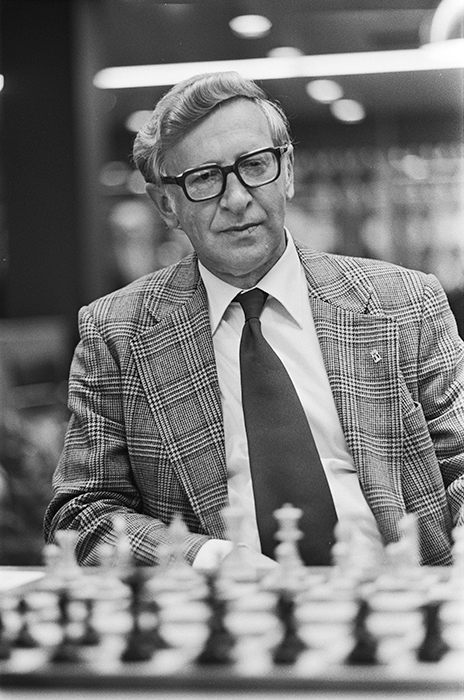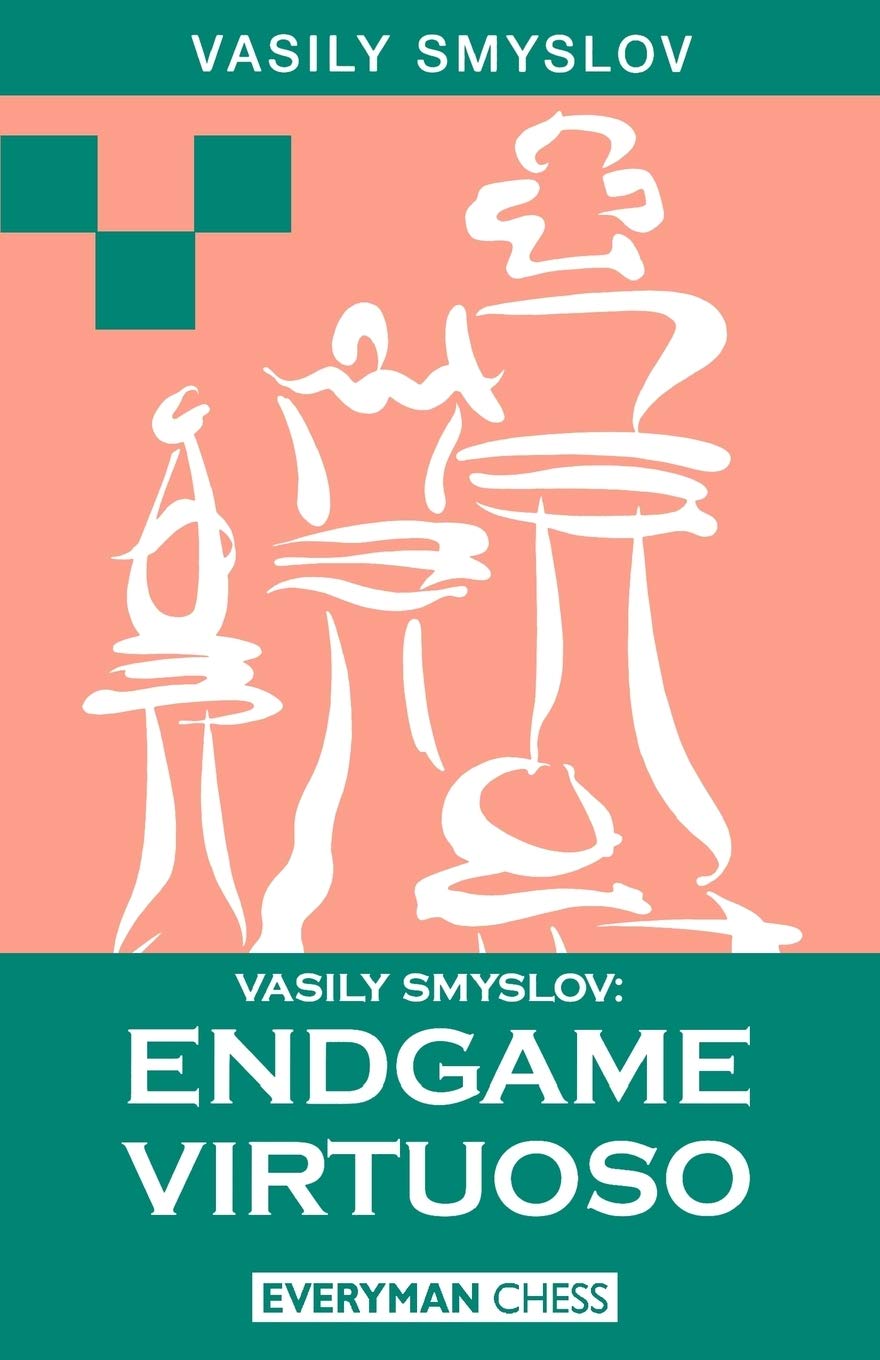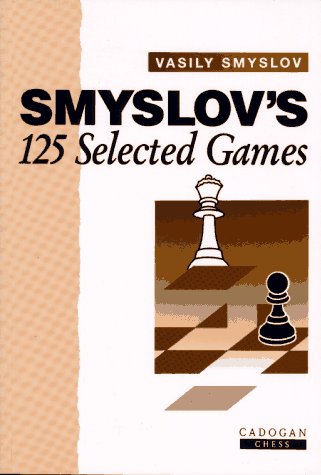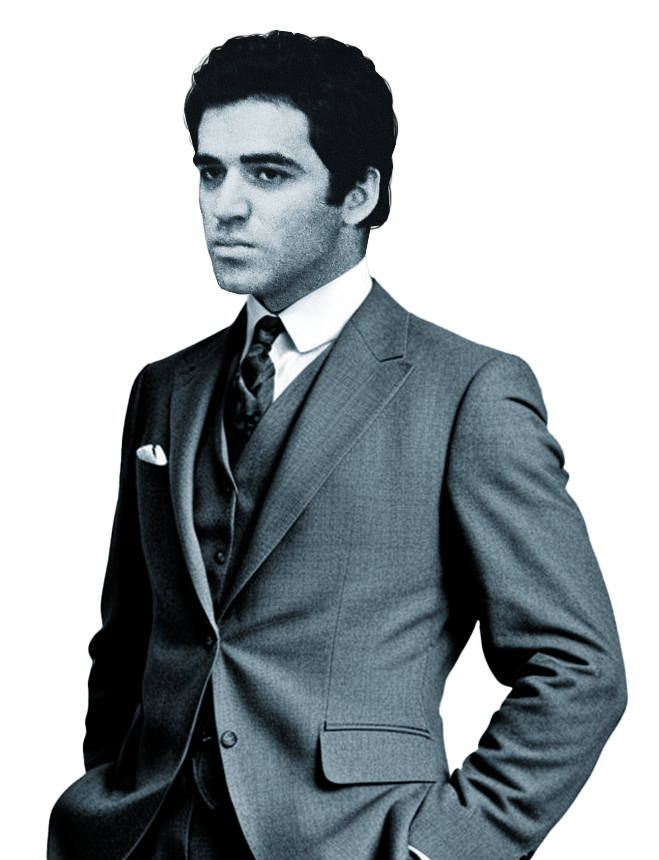Vasily Smyslov
Biography (1921–2010)
Arguably the strongest player of the 1950s, Vasily Smyslov challenged Botvinnik in 1954 after winning the Candidates in Zurich (1953), but the match was drawn. He got a second chance in 1957 after coming out on top in the Candidates in Amsterdam (1956) and took the title by defeating Botvinnik 12½-9½ (Moscow, 1957).Having lost the title in 1958, Smyslov continued his struggle for the highest title, and in 1984, in age 63, he played G. Kasparov (age 21) in a final match of World title challengers. His final Candidates' appearance was the Montpellier 1985 tournament. In 1991 Smyslov, aged 70, won the inaugural FIDE senior World champion title. Smyslov was known for his positional style and his precise handling of the endgame, but many of his games featured spectacular tactical shots as well. Besides chess Smyslov was a baritone opera singer. He used to say that he tried to achieve harmony on the chess board like in the music

Want chess advice?
On Smyslov
Max Euwe
Vasily Smyslov, this affable chess giant, makes moves that, perhaps, another chess grandmaster could do. There is only a small difference: Smyslov wins, but he does not. Unsuspecting opponents do not recognize his hidden plans, it seems to them that they are standing quite well ... But then they realized it, suspected something was wrong, but it was already too late! Yes, an amazing chess player, Smyslov, is a friendly and kind person, but it is very dangerous to play with him!
Mikhail Tal
Vasily Smyslov is known as a chess player of a very peculiar and interesting style, for his virtuoso endgame play. Smyslov is a modern Capablanca. We all learned brilliant endgame techniques from him
Tigran Petrosyan
I know the secret of Smyslov's amazing successes. He managed to reorganize in time, found a harmonious balance between the game "from general considerations" and specific calculation. He does not “drive” himself without unnecessary need into the jungle of tedious calculations, but when the situation requires, he calculates the options far and accurately
Boris Spassky
Vasily Vasilyevich has an incredible intuition, and I call him a “hand” — that is, his hand knows which cell to put each piece on, and he does not have to calculate anything with his head
Garry Kasparov
His victories at the peak of his career are astonishing due to the lack of a clear defense of his opponents, and a careful study of his work reveals that no one in the world could resist Smyslov's filigree technique. His credo was: "I will make forty good moves, and if you can do the same, then the game will end in a draw." But just “doing the same thing” was the most difficult thing: the semantic technique of the game was ahead of its time
Vladimir Kramnik
For children who want to learn how to play chess, I would advise first to study Smyslov's games. Because he played the right way; his style is as close as possible to some virtual "truth" of chess. He tried to make the strongest move in every position, and, very possibly, Smyslov surpassed many other world champions in the number of the strongest moves. As a professional, he impresses me a lot. I understand that amateurs are more interested in mistakes, ups and downs. But if you look at chess from a purely professional point of view, then I think that Smyslov is clearly underestimated
.png)
Want more?
Read

Vasily Smyslov Endgame Virtuoso, Cadogan
1997

Smyslov's 125 Selected Games (Everyman Chess)
1995


.png)
.png)